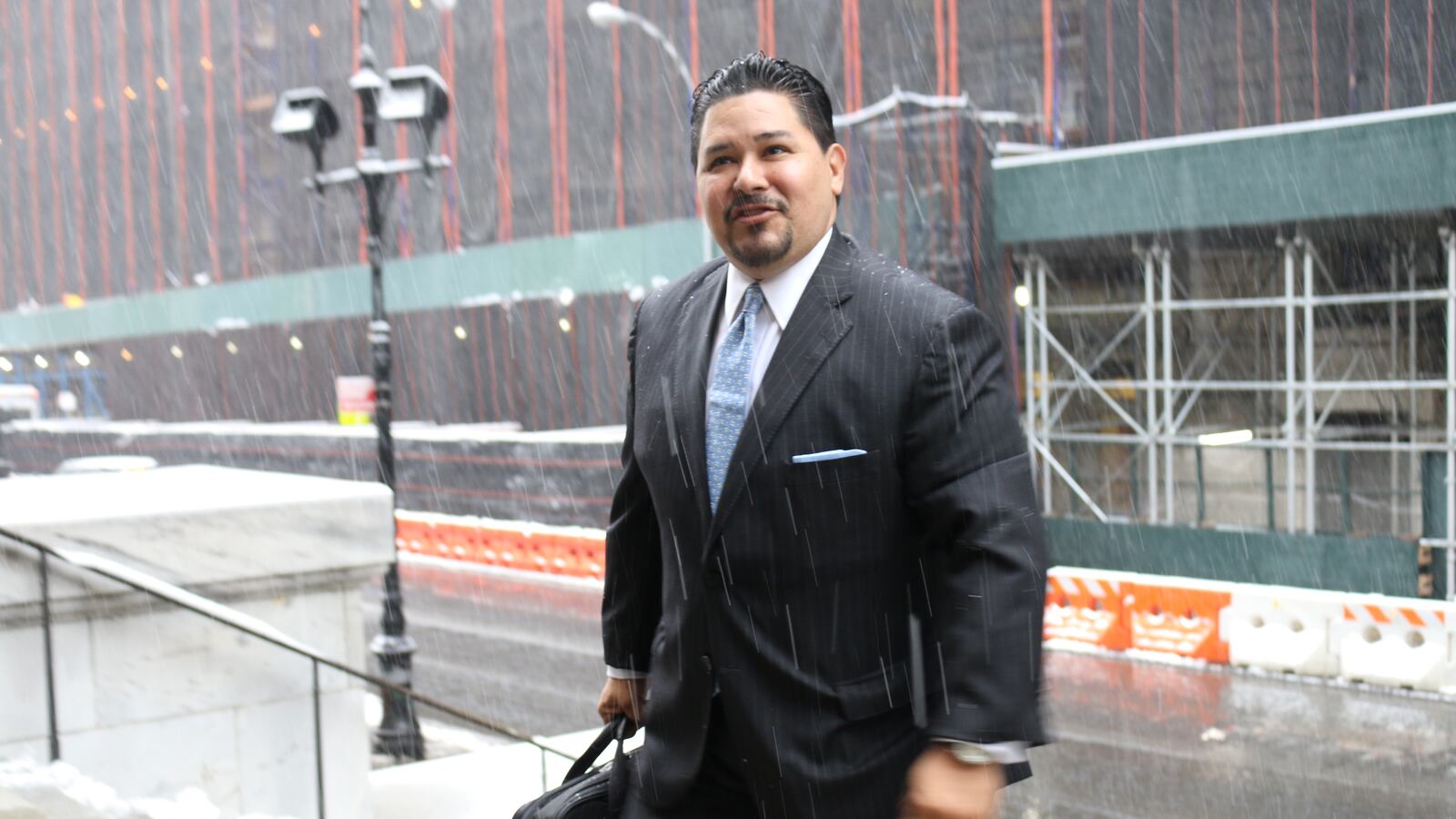Forty-five media interviews. Forty-six meetings with City Hall officials. A sit-down with an Obama nutrition advisor and White House chef.
Those were just some of the meetings that appeared on schools Chancellor Richard Carranza’s whirlwind schedule during his first 89 days in office, according to a copy provided nine months after an initial public records request.
Many of the entries on Carranza’s schedule show a leader just beginning to make sense of a massive bureaucracy: regular chats with senior officials, meetings with parents and union leaders, and school visits.
But it also shows the extent to which City Hall has played a central role bringing the chancellor up to speed, and the breadth of an all-out public relations blitz designed to quickly introduce the public to a leader new to the city.
During his first three months on the job — from April through June — Carranza met with top City Hall officials dozens of times, including dinner with Mayor Bill de Blasio and at least three conversations with the mayor’s wife, Chirlane McCray, who has worked to raise her public profile.
Close contact with City Hall is not entirely surprising since the mayor hires the chancellor and directly oversees the education department. Yet considerable overlap with City Hall appeared to spook de Blasio’s first-choice chancellor candidate, Miami Superintendent Alberto Carvalho, who abruptly turned down the job and later suggested he feared being constrained by the mayor’s staffing picks.
Carranza’s schedule included a stable of senior City Hall officials: first deputy mayor Dean Fuleihan; Emma Wolfe, the mayor’s chief of staff; and Karin Goldmark, a City Hall education advisor whom Carranza later named as a deputy chancellor.
One person absent from the regular rotation: de Blasio himself. While Carranza’s predecessor, Carmen Fariña, had a weekly meeting with the mayor, Carranza’s schedule does not show regular sit-downs with de Blasio. (An education department spokesman said the pair meet “regularly” but did not say why the meetings weren’t listed on the schedule.)
Aaron Pallas, a professor at Teachers College who has closely followed the mayor’s education policies, said it could make sense for City Hall officials to regularly brief a new chancellor because they “might have the best panoramic view” of the issues. But, he added, “it’s also possible to interpret the volume of meetings as reflecting the mayor’s well-known tendency toward micromanagement.”
For his part, Carranza has previously pushed back against the suggestion that City Hall has pressured him to make certain staffing choices. “Absolutely no story here,” he tweeted in May. “I make my own decisions.”
Mayoral spokeswoman Jaclyn Rothenberg added in a statement: “What would be strange is if City Hall involvement was less obvious in these schedules.”
The schedule comes with an important caveat: It is not a full accounting of who Carranza communicates with, since it does not include email, certain phone conversations, or off-the-cuff meetings. Education officials say they redacted meeting descriptions because they were “internal” discussions or “deliberative in nature.” But it does include some other highlights:
- Carranza’s schedule is often bursting at the seams, but it also includes unscheduled time called “whitespace” — which appeared on his calendar 65 times. An education department spokesman, Will Mantell, said Carranza uses the time to read briefings, write emails, and make calls — with 15-30 minutes set aside for lunch.
- The chancellor met with a few other school system leaders, including Dennis Walcott, a chancellor during the Bloomberg administration, and Juan Cabrera, who runs the El Paso Independent School District in Texas.
- A notable absence: Carranza’s immediate predecessor, Carmen Fariña. (Mantell said they have spoken by phone, but he did not say how often or why those conversations were not listed on the schedule.)
- Carranza participated in at least 45 media interviews, far more than Fariña did when she first took office, reflecting a need to introduce himself since he came from a different district — but also highlighting a shift in leadership styles.
- Despite recent comments criticizing the charter sector, Carranza has visited a handful of charter schools, including Success Academy Hell’s Kitchen and had a one-on-one meeting with James Merriman, who runs the New York City Charter School Center. Merriman said he requested the meeting, which was mostly a chance to introduce himself and to cover some of the ways district and charter schools collaborate.
- The schedule includes about a dozen meetings with teacher and principal union officials (the teachers union inked a new contract in October).
- Carranza met with Sam Kass — a White House chef turned nutrition policy advisor under President Barack Obama — to talk about school food.
The schedule’s release also offers a window into on the education department’s pledge to more quickly respond to public records requests. As one of the least transparent agencies in the city, education department officials promised in 2017 to stop repeatedly delaying records requests with form letters in favor of a “a clear and realistic estimate.”
In this case, the education department sent five form letters delaying a response over the course of nine months, with one of those letters coming more than a week late without explanation. Then, after missing its own Oct. 1 deadline, the education department did not say when it would provide Carranza’s schedule until it was emailed on Jan. 24.
“It’s our opinion that the law does not allow for repeated extensions,” said Kristin O’Neill, the assistant director of the state’s Committee on Open Government. “It doesn’t sound like they responded in a way that’s consistent with the statute.”
A department official, who emailed a statement “on background” said the education department is committed to transparency with public records requests and “continuing our work to improve timeliness of responses.”
Here’s a full copy of the schedule:


